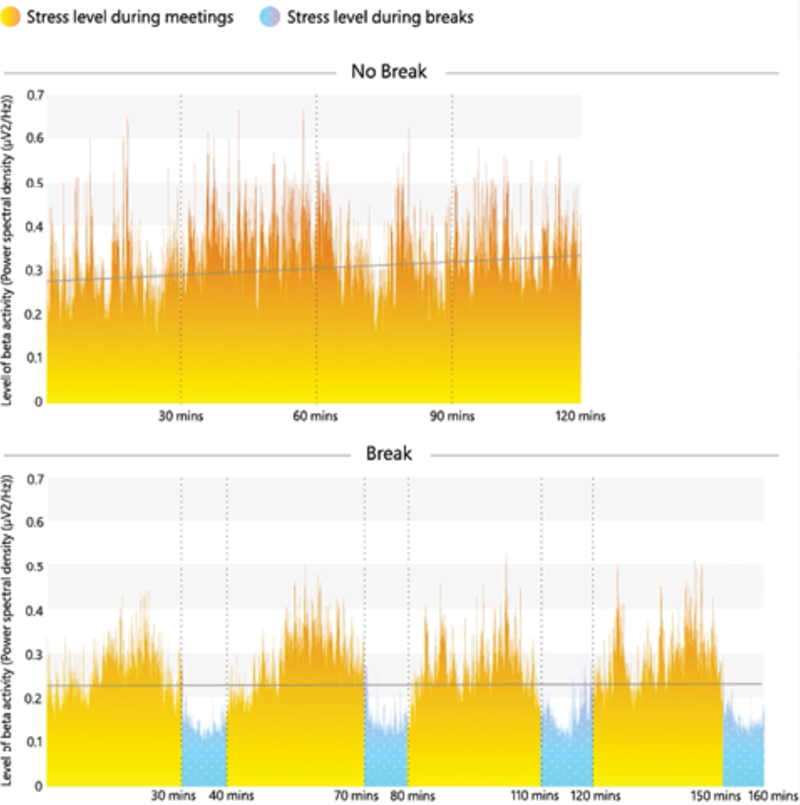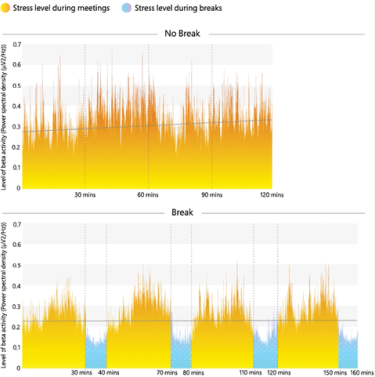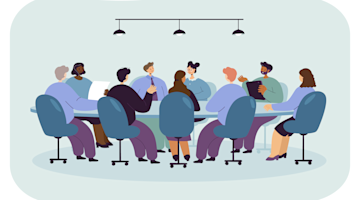Does this sound familiar? Every day, you sit in front of your laptop, attending one meeting after another, looking into the camera at the attendees on the screen. After several virtual meetings in a row, you feel exhausted. You’re in a fog. It’s hard to focus, and at the same time, you’re agitated or cranky. Typically, these meetings are calm discussions – no screaming or yelling – just another typical virtual meeting. So why do you feel so physically and mentally tired?
Being the curious guy that I am, I did some research and learned that it’s the result of the world we now live in. They call it all sorts of things: virtual meeting fatigue, Zoom fatigue, or just plain virtual fatigue.
Virtual fatigue
“Virtual fatigue” stems from how our brain processes information over video. On a video call, the only way to show we’re paying attention is to look right into the camera. In real life, when you’re meeting with a customer, how often do you stand within three feet of them and stare at their face? Probably never, because it’s very creepy. In an in-person meeting, we can use our peripheral vision to glance out the window or look at others in the room. On a virtual call, we worry that doing so might appear like we’re not paying attention – not to mention that most of us are also staring at a small window of ourselves, hyper-aware of our every wrinkle and expression – and how they might be interpreted.
We need a little downtime to refocus; if we don’t, the increased stress caused by this need to intensely focus during a virtual meeting will cause our brains to become fatigued.
The hits keep comin’
If the stress of focusing on the camera is not bad enough, we tend to exacerbate the problem with back-to-back meetings. One meeting ends and another begins; there’s no time for a bottle of water, to stretch, or to take a bio break – just an endless stream of virtual meetings, which increases our stress factor.
“These back-to-back meetings that have become the norm over the last 12 months just aren’t sustainable,” says Jared Spataro, corporate vice president, Microsoft 365.
Think about it: When we were on the road, calling on our customers, and a meeting ended, we got in our car, turned on some music, picked up some food, made a few phone calls, and we were ready for the next meeting. Not today. That natural break between meetings is gone. We immediately go on to the next meeting because we can and don’t know any better. So it should really be no surprise that we find ourselves stressed and exhausted at the end of the day.
Science says press that reset button!
Microsoft’s Human Factors Engineering Group’s research study shows that brain wave activity never gets a chance to decrease with back-to-back virtual meetings, which causes stress, as shown in the chart. Here’s why:
Breaks between meetings allow the brain to “reset,” reducing the cumulative buildup of stress across meetings.


The chart represents the relative difference in beta activity between break and no-break conditions. For those who are given breaks, their average beta wave activity remained largely steady over time. The cool blue sections of the graph indicate breaks between meetings and lower levels of stress. For those who didn’t take breaks, their average beta activity rose as time passed, showing a buildup of stress that spiked much higher in the chart than their counterparts. This is not good.
Back-to-back meetings can decrease your ability to focus and engage.
Without breaks, stress levels were higher among participants, and they were more withdrawn and less engaged in their meetings. For those who had breaks during or between meetings, their brain patterns showed less stress, which correlated to higher engagement.
Jumping directly from one meeting to another can cause spikes of stress
The research also showed that those deprived of breaks between meetings showed stress levels spiking in the transition period between calls. This suggested a series of mental actions may have been occurring as they came to the end of a meeting: remembering the next meeting; ensuring they got out on time; recalling the subject of the next meeting; and immediately participating in the next meeting at a high level. Talk about a stress builder! Those who had even a short break between meetings showed a significant reduction in the level of stress.
Now that’s a lot of bad news about the stress that we bring on ourselves, but at least we understand why we feel the way we do after a few back-to-back meetings. It’s also comforting to know that pretty much everyone who experiences this goes through the same thing.
Make it easy to take it easy
So here’s the good news. The solutions to reducing your stress and fatigue levels caused by constant virtual meetings are logical and pretty easy.
Take breaks between meetings.
Taking breaks allows your brain to reset, reducing the cumulative buildup of stress between meetings. Try scheduling meetings for 50 minutes instead of an hour so you have a built-in 10-minute break before the next meeting.
Avoid multitasking.
Most of us think that we can use a virtual meeting as an opportunity to multitask – to do more in less time. However, multitasking cuts into performance because we use different parts of our brains for different types of work. Multitasking can cost as much as 40% of productive time. It turns out that people who multitask can’t remember things as well as those who are more singularly focused. Besides, don’t think for a minute that your customer doesn’t know when you’re multitasking. The second you divert your eyes and lose focus, they know. Multitasking is a very good way to lose the respect of your customer.
Switch to phone calls or emails.
Many people now think that virtual meetings are the default for all communications. Not true! Conversations where you used to rely on phone calls don’t have to go virtual today. If there are conversations that you can have via phone or email, make the change. Virtual calls are fairly intimate and can feel invasive at times. For instance, the first time you are communicating with a new customer, a phone call is the safer path for both parties. It will reduce your stress and the customer will thank you for it.
I know that some of these tips to reduce stress and have more effective virtual meetings might be hard to follow at the beginning – especially the multitasking. But if you practice these simple steps, I guarantee they will do a world of good, not only for you and your brain, but also for anyone who attends your meetings.
“That natural break between meetings is gone. We immediately go on to the next meeting because we can and don’t know any better. So it should really be no surprise that we find ourselves stressed and exhausted at the end of the day.”
If you are interested in learning more, contact me at slesnewich@AMTonline.org or call me at 908-313-8266.





